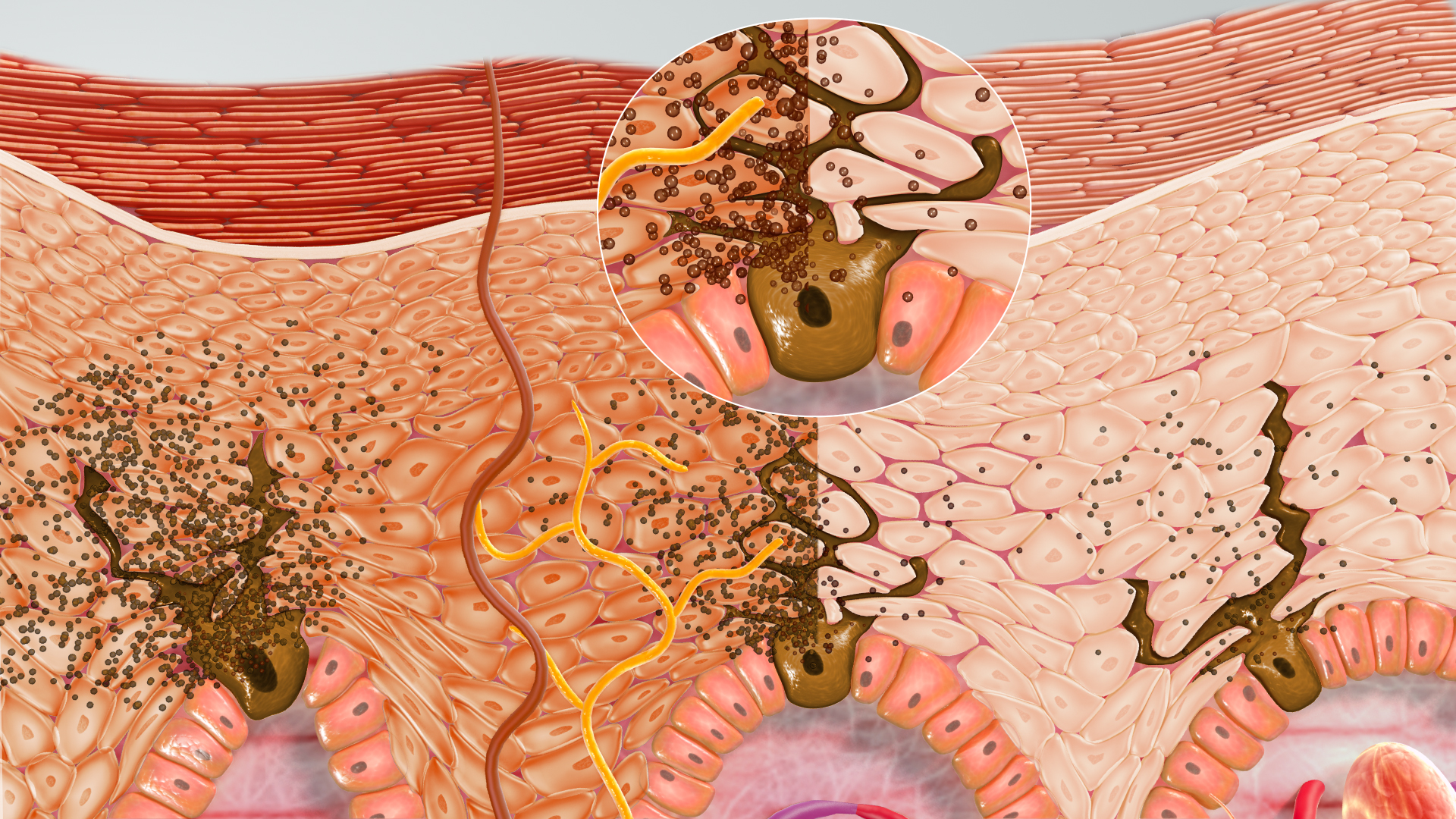The sun, water, air - the elements - are double-edged swords for humans. In moderation, they sustain planetary life. But they can also be dangerous. The human body’s machinery harvests the elements to produce nutrients or run internal processes. But it also has defenses against excess exposure to the elements. Versus the sun, this defence is the process of melanogenesis, or skin tanning.
Melanin - the first line of defense
Melanin is a dark pigmented substance that gives a brown color to skin, hair, even eyes. The more melanin, the darker the colour. This is a byproduct of melanin’s primary purpose, to absorb radiation. Embedded in the epidermis (the skin’s top layer), melanin absorbs the sun’s UV radiation, preventing it from reaching and harming inner cells. An increase in melanin, darkens the skin, yielding a skin tan, but also bolsters the skin’s absorption ability. Skin tanning, therefore, is a proactive, protective measure to increase melanin in a process known as melanogenesis.
How UV radiation affects the skin
Human skin consists almost entirely of water and organic molecules like lipids, proteins, DNA. Like all molecules, the atoms in these molecules have electrons, that At room temperature, however, all these molecules have electrons in their ground state. The UV radiations absorbed by the biomolecules cause their electrons to move to an excited state. But the charged electrons immediately lose their energy, causing a chemical change. Highly reactive compounds like hydrogen peroxide, and unstable free radicals are formed that diffuse throughout the cells and can react with other molecules, causing alterations in metabolism. The observable effect may be skin pigmentation or erythema. However, besides that, production of Vitamin D, sunburns, wrinkles and, in worst cases, tumor formation, can occur, partly due to the accumulation of toxic side products of melanin and its intermediates.
How does melanin respond to sunlight?
Melanin is a UV absorbent and has antioxidant and radical scavenging properties. However, its role in photoprotection is still controversial.

The epidermis is the site for the synthesis of vitamin D. During exposure to sunlight, 7-dehydrocholesterol in the epidermis undergoes UVB photolysis and thermal isomerization to form vitamin D3 (cholecalciferol). This vitamin D3 is then hydroxylated and transported to the kidney where it is converted into the biologically active form of vitamin-D3 or calcitriol. Melanin absorbs UVB photons and competes for them with 7-dehydrocholesterol, and hence, influences the effectiveness of vitamin D3 synthesis. It was reported that skin pigmentation greatly reduces the UVR-mediated synthesis of vitamin D3 as those with Black skin require at least a 6-fold greater UVR dose to increase circulating levels of vitamin D3 than do those with White skin. It was also reported that many African Americans who live in northern parts of the US suffer severe vitamin D deficiencies in spite of supplementing foods with vitamin D.
However, available data about the relationship between solar UVR, skin pigmentation and vitamin D status show contradictory results.
Quite clearly, skin tanning or melanogenesis is a natural defense mechanism that is alerted against UV rays, through production of melanin pigment by melanocytes. Skin pigmentation is important from both cultural and cosmetic point of view. In geographical areas that get high UV-exposure, there is a natural selection for dark skin to prevent sunburn, skin cancer and photolysis of folic acid and abnormal thermoregulation through sweat glands. The gradient between UVR level and constitutive pigmentation seems to represent a compromise between the deleterious effect of UVR and its beneficial effects regarding vitamin D synthesis.
Tanning occurs in two phases.
The first phase is immediate pigment darkening (IPD). This is the phase that shows rapid darkening of the skin during UVA or visible light exposure and, hence, has maximum visible effect. As rapid as it begins, IPD may also fade within minutes if the radiation exposure is limited. However, it may last several days after longer exposures. The extent of IPD is primarily a reflection of the person's skin type.
Delayed tanning, as the name suggests, is increased melanin production that becomes visible 72 hours after UV exposure. Delayed tanning needs a considerable amount of exposure time and intensity to both UVA and UVB. Long lasting IPD can blend with delayed tanning.
Conclusion
The presence and amount of melanin in an individual is determined by hereditary factors and our natural skin color is indicative of that.
Our idea of race, in terms of chemistry, is nothing more than how we’ve adapted to our geographies.








